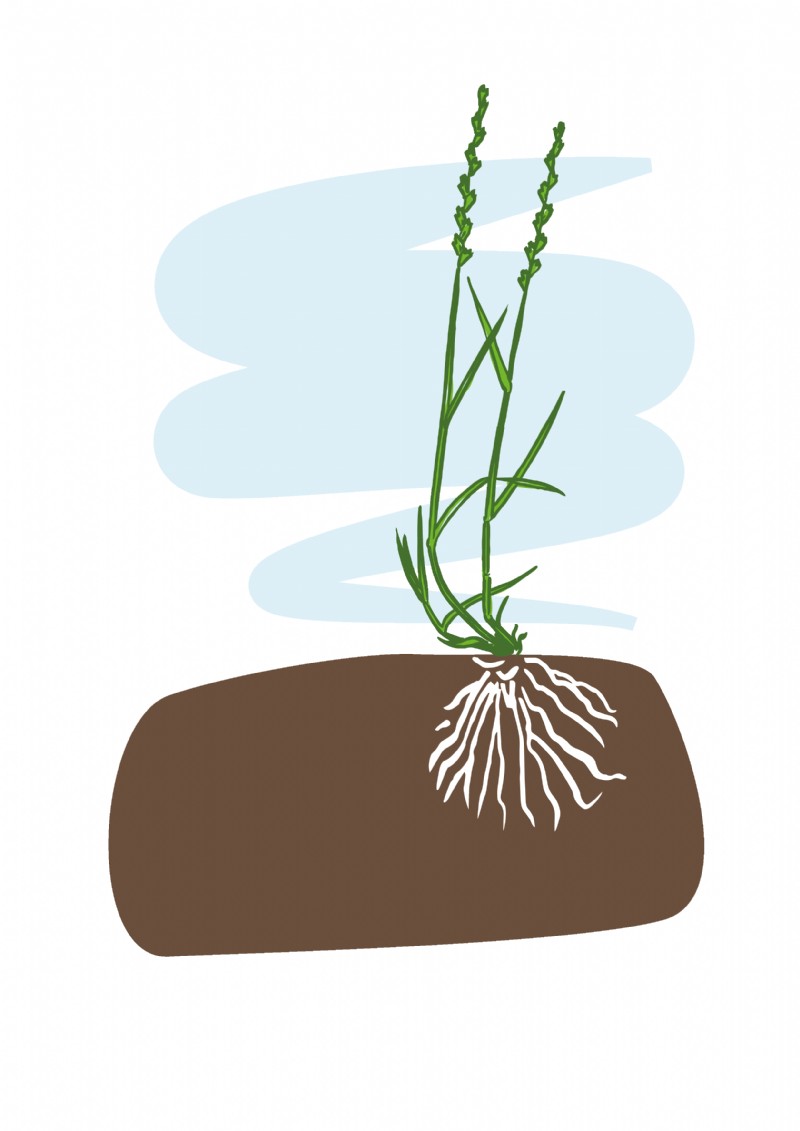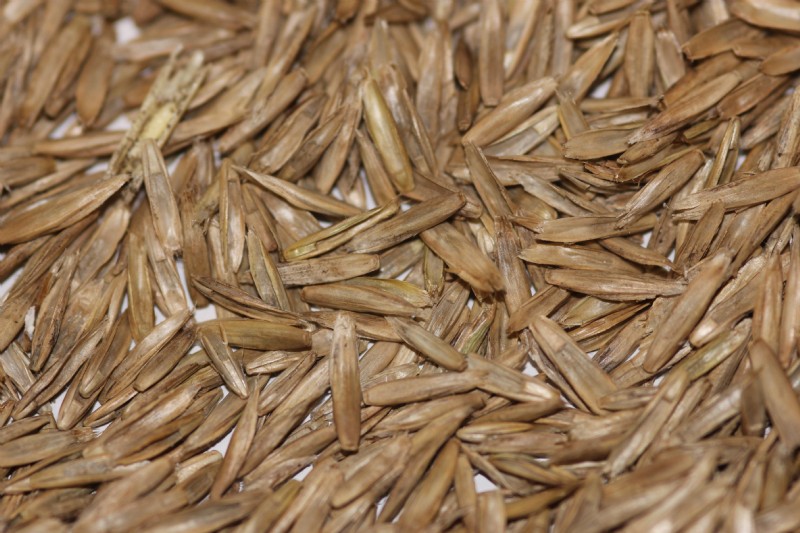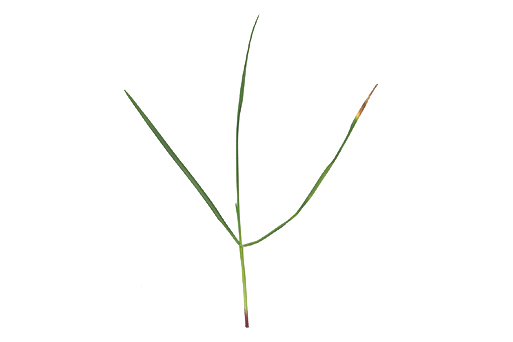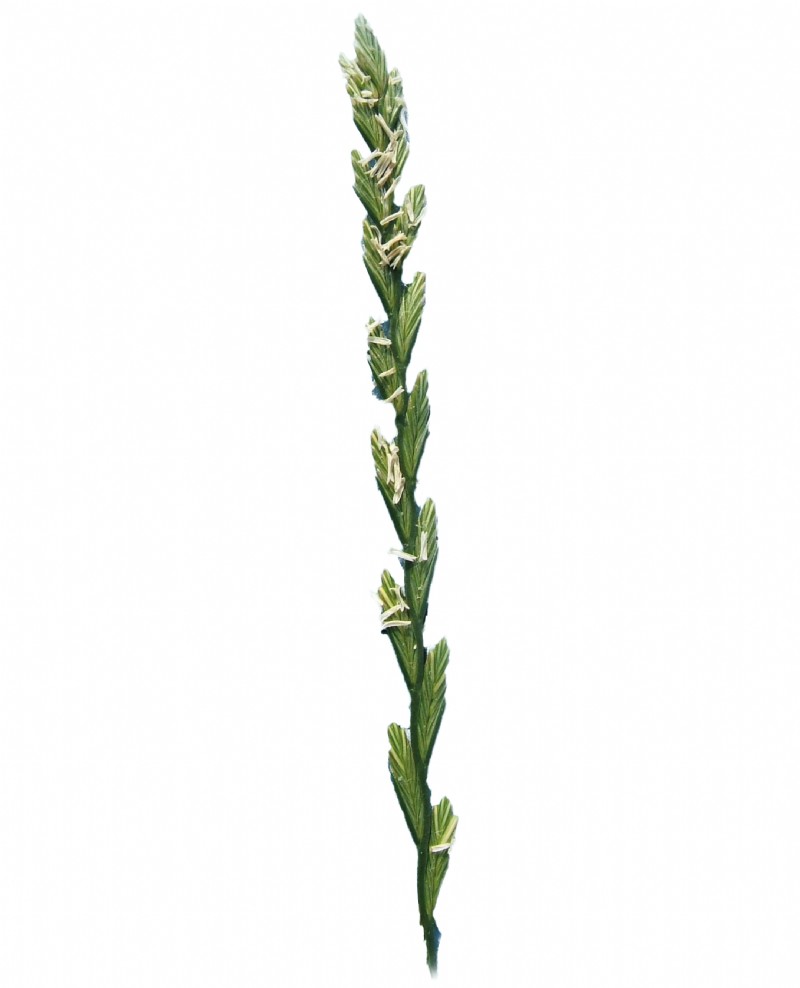Perennial Ryegrass
Perennial ryegrass is the most commonly grown productive grass in the UK, used particularly for livestock grazing and forage. It has been the subject of plant breeding for over 60 years, ensuring there are a wide range of perennial ryegrass varieties available commercially.
Uses
Used for silage, haylage, hay and grazing.
Persistence
This is a long term species, the most persistent of the ryegrasses, usually lasting up to 6 years. After which productivity may start to drop off and native weed grasses may creep into the sward.
Strengths
Perennial ryegrass is the most persistent ryegrass, lasting up to 6 years. It lasts considerably longer than the higher yielding Italian and westerwolds ryegrasses. It’s flexible in use, because it can be grazed or cut and made into silage, haylage or hay later in the season. Many varieties are bred especially for their palatability and digestibility. Varieties that seed later in the season are best for grazing.
Frost Tolerance
Perennial ryegrass will withstand most frosts throughout the winter.
Yield
13t of dry matter per ha
Sowing Rate Advice
14kgs per acre / 35kg per ha
Pure stands of perennial ryegrass are not uncommon, be aware ryegrass is aggressive if adding into traditional environmental mixtures.
Ideal Sowing Time
Ideal times are April to September when there is adequate moisture for establishment.
Management
Cutting for silage will depend on the heading date of the plant, each ryegrass species is different in terms of its maturity. Generally most perennial ryegrasses fall into intermediate or late varieties. Intermediate varieties will head around the last week of May. Late varieties will head in early June. As the plant starts to mature and develop a seed head the quality of the forage (D-value) will decline. A D-value between 67-70 will provide good quality forage, which equates approximately to 25-50% ear emergence. When the plant is cut will depend on the type of stock the forage is to be fed to. Some stock require a lower quality, stemmier silage such as dry cows, while growing young stock require a higher quality forage. Perennial ryegrass normally provides 2 cuts on good ground, or a cut and aftermath grazing depending on the mixture. This species produces more leafy tillers from the base of the plant than other ryegrass species, which means produces a better, thicker grazing sward. Grazing the sward in mid to late autumn is important because it stops the crop going into the colder winter temperatures in a upright leafy state, where it can be affected by hard frosts. Grazing also allows the base of the sward to be cleaned out by the livestock and fresh growth encouraged early next spring. Perennial ryegrass is susceptible to the usual pests and diseases found in ryegrass, including mildew and ryegrass mosaic virus. Modern varieties have good disease resistance scores, which can be found on the recommended list.
Distinguishing characteristics
Seed
This is a thin, narrow seed. It has a smooth, sometimes papery, shiny texture. It is 5mm in length.
Flowering Plant
This species is dark green and glossy in appearance, forming dense tufts as it develops.
The underside of the leaf is smooth and glossy, with the top side being slightly rougher, both are hairless. The younger leaves are folded in the sheath before they extend, unlike IRG which are rolled in the sheath.
The ligule is up to 2 mm in length.
Basal leaf sheaths are smooth, with the base of each culm pink to red in colour.
Its inflorescence can be from 4-30cm long, notably with awnless spikelets, they are arranged along opposite sides of the axis.
It can reach a height from 10 - 90 cm in height.
Additional Info
Flowers May - September. Average seeds per kg - 400,000. Modern plant breeding has produced tetraploid ryegrass varieties. With double the number of chromosomes of the standard diploid varieties, they have different characteristics. Tetraploid ryegrasses are highly palatable which leads to higher voluntary intakes and so are of great value in seeds mixtures, they can also be larger fleshier, high yielding plants. However, they tiller less than diploids and this means that they do not cover so much ground, leaving more soil showing. Nor are they as persistent. For these reasons, tetraploids should be favoured more in silage leys, where they contribute to yield. Late diploid varieties are normally the base of a long term grazing mixture. Generally intermediate ryegrass varieties head in the 3rd and 4th week of May. While late varieties head during the 1st and second weeks of June.
Works well with
Perennial ryegrass can be combined with several species. It works well with white clover, to create a more drought tolerant, higher protein grazing forage. New thinking on diverse systems is also including other species in perennial ryegrass swards such as chicory or plantain (ribgrass).Buy Perennial Ryegrass Straight 
You can find Perennial Ryegrass in the following mixtures
- Intensive Dairy Graze - Early Four-Five Year Ley
- Intensive Dairy Graze - Late Five Year Plus Ley
- Maximum D-Value Four-Five Year Silage Ley
- Hybrid Silage Ley - Three-Four Year Ley
- Permanent Grass
- Milk-Meat Cut or Graze Five Year Plus Ley
- Ryegrass Over-Seeding Longer Term 4-5 Years 70% ORGANIC
- Ryegrass Over-Seeding Short Term 2-3 Years 70% ORGANIC
- Ryegrass & Clover Over-Seeding Longer Term 4-5 Yr 70% ORGANIC
- Horse Pasture Over-Seeding Longer Term 4-5 Years
- Pasture Over-Seeding Longer Term 4-5 Years 70% ORGANIC
- Early Bite Sheep & Hay Ley
- Light Land Beef/Sheep - Long Term Ley
- ‘POCHON’ Dairy Two-Four Year Silage/Grazing Ley
- ‘POCHON’ Dairy Two-Four Year Silage/Grazing 70% ORGANIC
- ‘POCHON’ Persistent Long Term Grazing Ley
- ‘POCHON’ Persistent Long Term Grazing Ley 70% ORGANIC
- ‘CHOLDERTON’ Mix Four Year Plus Grazing/Cutting Ley
- ‘CHOLDERTON’ Mix Four Year Plus Grazing/Cutting Ley 70% ORGANIC
- Standard Horse Pasture - Long Term Grazing & Hay
- Standard Horse Pasture - Long Term Grazing & Hay - 70% ORGANIC
- Traditional Hay Maker - Long Term Hay Ley
- Traditional Hay Maker - Long Term Hay Ley - 70% ORGANIC
- Hay & Graze - Four Year Dual Purpose Hay/Haylage Ley
- Hay & Graze Medium Term 4 year Hay Ley - 70% ORGANIC
- Fertility Builder: One-Two Year Mixture
- Fertility Builder One-Two Year Mixture 70% ORGANIC
- Solar Park Long Term Grazing Mixture
- Solar Park Long Term Grazing Mix 70% Organic
- Solar Park Permanent Grassland - Low Maintenance
- Solar Park Permanent Grassland - Low Maintenance 70% Organic
- Light Land Legume & Herb Rich Sward (GS4/SAM3/CSAM3)
- Light Land Legume & Herb Rich Sward (OP4/SAM3) 70% Organic
- Heavy Land Legume & Herb Rich Sward (GS4/SAM3/CSAM3)
- Heavy Land Legume & Herb Rich Sward (OP4/SAM3) 70% Organic






